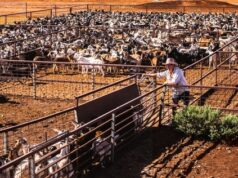Sorghum, a drought-resistant staple crop, has historically been crucial to Somalia’s food security. Prior to the Somali government’s collapse in 1991, sorghum production experienced a steady rise due to government-backed agricultural programs, availability of improved seeds, and organized irrigation systems. Production peaked at 230,000 metric tons in 1988, reflecting well-implemented agricultural policies and a relatively stable climate.

However, after the government’s fall in 1991, Somalia’s sorghum production suffered a significant decline. The civil unrest disrupted farming activities, destroyed irrigation infrastructure, and displaced farming communities. From 1992 to 1994, sorghum production dropped to its lowest levels, averaging between 60,000 and 80,000 metric tons annually. This decrease was caused by limited access to farming inputs such as seeds and fertilizers, as well as ongoing insecurity in key agricultural regions.
Despite these challenges, production began to recover slowly in the late 1990s, driven by local farming cooperatives and aid organizations that supported drought-resistant seed distribution and emergency agricultural recovery programs. While production levels improved to around 90,000 metric tons by 2000, they remained far below pre-collapse figures, highlighting the continued struggles faced by Somali farmers in rebuilding the agricultural sector.
The graph illustrates the sharp production decline after 1991, indicated by the dashed red line marking the government’s collapse. The accompanying data table shows year-by-year production figures, highlighting the stark contrast between pre- and post-collapse agricultural productivity. This trend underscores the deep-rooted impact of political instability on food production and economic sustainability in Somalia.














